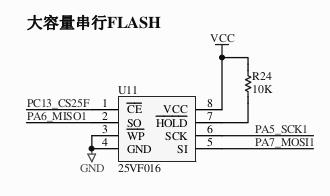Dec 5, 2013
TechnologyStrangely, I cannot enable the multiple SSH connections on OpenWRT.
The configuration file is listed as:
config autossh
option ssh '-N -T -R 4381:localhost:22 root@XXX.xxx.xxx.xxx '
option gatetime '0'
option monitorport '20000'
option poll '600'
#config autossh
# option ssh '-L -N -T 10.0.0.1:9009:1XX.XX.XX.XXX:8000 xxx@xxx.xxx.xxx.xxx '
# option gatetime '0'
# option monitorport '20001'
# option poll '600'
But only 1 connection could be enabled.
I doubt this is because of the startup scripts for /etc/init.d/autossh. I should change its methods.
start() {
config_load 'autossh'
config_foreach start_instance 'autossh'
}
But how to read and display the configuration files? It seems the multiple selections is hard to config…..
Dec 2, 2013
Technology###Installation
Update repository and install samba and samba services.
$ sudo apt-get update
$ sudo apt-get install samba smbfs
###Configuration
Add a new samba user:
Trusty@joggler:~$ sudo smbpasswd -a Trusty
[sudo] password for Trusty:
New SMB password:
Retype new SMB password:
Editing the /etc/samba/smb.conf:
[samba]
comment = samba for ethernet users
path = /media/samba
valid users = Trusty
public = no
writable = yes
printable = no
create mask = 0765
[homes]
comment = Home Directories
browseable = no
security = user
username map = /etc/samba/smbusers
Adding the mapping of the system user to samba user:
Trusty@joggler:/media$ cat /etc/samba/smbusers
Trusty="Trusty"
Restarting the samba service and now you can login with your new username and password.
###Configure easy
swat for samba, its description is listed as:
swat - Samba Web Administration Tool
$ sudo apt-get install swat xinetd
edit the configuration files:
Trusty@joggler:/etc/samba$ cat /etc/xinetd.d/swat
# description: SWAT is the Samba Web Admin Tool. Use swat \
# to configure your Samba server. To use SWAT, \
# connect to port 901 with your favorite web browser.
service swat
{
port = 901
socket_type = stream
wait = no
user = root
server = /usr/sbin/swat
log_on_failure += USERID
disable = no
}
After restart xinetd, we can access http://YourIP:901 for configuration.
###Mount the samba partition
We can add this line to the ~/.bashrc, then use mountsamba we could mount the samba disk to our own mounting point.
alias mountsamba='sudo mount -t cifs //10.0.0.11/samba1/ -o user=Trusty,password=Trustywill,workgroup=WORKGROUP /media/samba'
On Windows it’s very convinient to mount the shared samba, but on Linux, only root could write to the samba disk , why?
###NFS
Installation:
$ sudo apt-get install nfs-kernel-server
$ sudo apt-get install rpcbind
Configuration of the nfs server:
Trusty@joggler:~$ cat /etc/exports
/home/Trusty 10.0.0.221(rw,sync,no_subtree_check) 10.0.0.11(rw,sync,no_subtree_check)
Restart the service of nfs:
$ sudo service nfs-kernel-server restart
In client machine, Just add following lines to your /etc/fstab
10.0.0.11:/home/Trusty /media/nfs nfs4 rsize=8192,wsize=8192,timeo=14,intr,_netdev 0 0
Restart and now in your own /media/nfs you will see the destination nfs directory.
Dec 1, 2013
Technology直接操作寄存器的好处,最主要的就是看中它的快。缺点在于比较晦涩,因为你需要了解到实现的底层。在官方库中,我们可以找到如下的定义:
//./Libraries/CMSIS/CM3/DeviceSupport/ST/STM32F10x/stm32f10x.h:
#define PERIPH_BASE ((uint32_t)0x40000000) /*!< Peripheral base address in the alias region */
//./Libraries/CMSIS/CM3/DeviceSupport/ST/STM32F10x/stm32f10x.h:
#define APB2PERIPH_BASE (PERIPH_BASE + 0x10000)
//./Libraries/CMSIS/CM3/DeviceSupport/ST/STM32F10x/stm32f10x.h:
#define GPIOA_BASE (APB2PERIPH_BASE + 0x0800)
//./Libraries/CMSIS/CM3/DeviceSupport/ST/STM32F10x/stm32f10x.h:
#define GPIOA ((GPIO_TypeDef *) GPIOA_BASE)
// Definition of the GPIO Types
/**
* @brief General Purpose I/O
*/
typedef struct
{
__IO uint32_t CRL;
__IO uint32_t CRH;
__IO uint32_t IDR;
__IO uint32_t ODR;
__IO uint32_t BSRR;
__IO uint32_t BRR;
__IO uint32_t LCKR;
} GPIO_TypeDef;
/**
* IO definitions
*
* define access restrictions to peripheral registers
*/
#ifdef __cplusplus
#define __I volatile /*!< defines 'read only' permissions */
#else
#define __I volatile const /*!< defines 'read only' permissions */
#endif
#define __O volatile /*!< defines 'write only' permissions */
#define __IO volatile /*!< defines 'read / write' permissions */
;
从上面就可以基本看出GPIO的相关知识。在GPIO的使用中我们需要注意7个寄存器:
CRL, CRH, IDR, ODR, BSRR, BRR, LCKR.
使用起来很简单,直接调用相应的寄存器操作就好:
GPIOA->CRL=0x00;
寄存器的定义在手册中有详细的介绍。简单的说,CRL和CRH被称之为Configuration Register, 配置寄存器,而IDR和ODR则是数据寄存器,一个是INPUT一个是OUTPUT。 置位/复位寄存器BSRR,还有一个16位的复位寄存器BRR, 还有一个32位的锁定寄存器LCKR,设置好对应的寄存器则可执行相应的操作。
输入和输出操作可以直接操作寄存器,例如点亮和熄灭LED都是可以直接用操作寄存器来完成。而对键盘的操作,则是读入值。
#define GET_LEFT() (!(GPIOD->IDR&GPIO_Pin_3))
能使用库函数的场合,除非对IO要求非常高,否则不建议直接操作寄存器。因为出错误的概率会远远增大。
Dec 1, 2013
TechnologySST25F080,高达 1M 字节的串行 FLASH 存储器,此芯片为-50 版,即 SPI 速度可达到 50M,利用 STM32 的最高速 SPI 接口(36M),读写速度绝对不比并行 FLASH 慢.
连线图如下:

Nov 30, 2013
TechnologyRTC(Real Time Clock) 在STM32中可以理解为内置的一个部件,和传说中的DS1302是有差别的。尽管官方发布的程序可以将RTC搞成一个万年历。
###配置RTC
RTC需要顺带使用后备寄存器, 因为RTC是一个简单的秒中断定时器,关于年日月分秒的信息需要在掉电保存时依然放在某个地方,这个地方就是STM32的后备寄存器。配置好以后,尽管系统关电,依靠板子上的后备电池,依然可以保存32768的晶振和后备寄存器的数据。
配置RTC的方法:
#include "stm32f10x_bkp.h"
#include "stm32f10x_pwr.h"
#include "stm32f10x_rtc.h"
//使能一些外设
RCC_APB1PeriphClockCmd(RCC_APB1Periph_PWR | RCC_APB1Periph_BKP, ENABLE);
PWR_BackupAccessCmd(ENABLE);
###判断RTC是否被配置过
下面的函数被用于判断RTC是否被配置过:
/**************************************************************
** 函数名:TestRtc
** 功能:测试RTC用
** 注意事项:用于显示RTC是否已经设置过.
***************************************************************/
void TestRtc(void)
{
if(RTC_Blank)
{
USART1_Puts("The Time is not set\r\n");
}
else
{
USART1_Puts("Time Setted.\r\n");
}
}
这个函数判断RTC_Blank全局变量的值,而全局变量的值则在配置RTC的时候被设定。
void RTC_Configuration(void)
{
//......
if(BKP_ReadBackupRegister(BKP_DR1) != 0xA5A5)
{
//......
RTC_Blank=1; //这个标志代表RTC是没有预设的(或者说是没有上纽扣电池)
}
如果RTC后备寄存器的值为设定为0xA5A5,则代表RTC已经被设置过。否则,我们认为它处于未被设置过的状态。
###使用RTC的秒中断
在NVIC中,需要有下列的定义,以标识RTC的秒中断。
/* RTC */
NVIC_InitStructure.NVIC_IRQChannel = RTC_IRQn;
NVIC_InitStructure.NVIC_IRQChannelPreemptionPriority = 0;
NVIC_InitStructure.NVIC_IRQChannelSubPriority = 0;
NVIC_InitStructure.NVIC_IRQChannelCmd = ENABLE;
NVIC_Init(&NVIC_InitStructure);
对应的中断响应例程则定义在stm32f10x_it.c中:
/*******************************************************************************
* Function Name : RTC_IRQHandler RTC中断
* Description :
* Input : None
* Output : None
* Return : None
*******************************************************************************/
extern volatile bool Sec; //1S标志
void RTC_IRQHandler(void)
{
if(RTC_GetITStatus(RTC_IT_SEC) != RESET) //RTC发生了秒中断(也有可能是溢出或者闹钟中断)
{
RTC_ClearITPendingBit(RTC_IT_SEC);
Sec=TRUE;
//以免RTC计数溢出,这里限制了RTC计数值的大小.0x0001517f实际就是一天的秒数
if(RTC_GetCounter() >= 0x0001517f)
{
RTC_SetCounter(0x0);
}
}
}
而在main.c中,则根据Sec的值来闪烁LED1灯。
for(;;)
{
if(Sec == 1)
{
Sec = 0;
GPIOA->ODR^=GPIO_Pin_8;
}
}
Test:
for(;;)
{
if(Sec == 1)
{
Sec = 0;
GPIOA->ODR^=GPIO_Pin_8;
}
}

